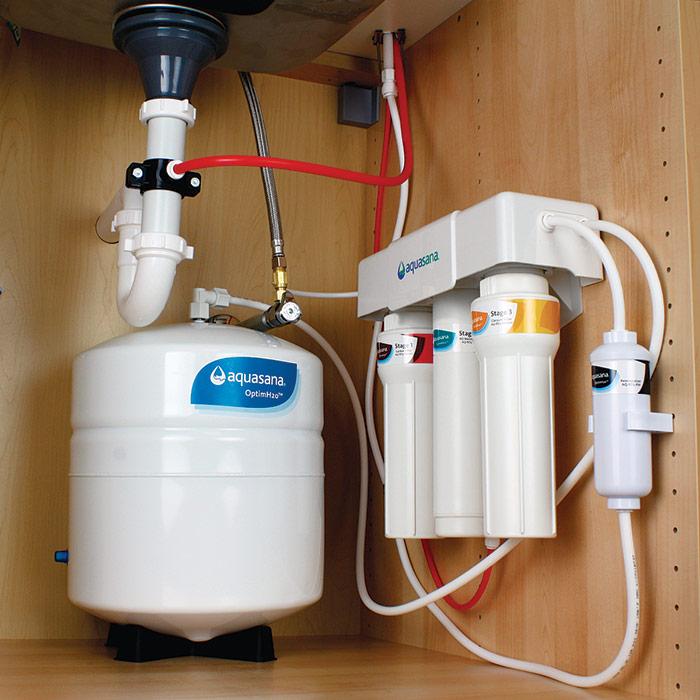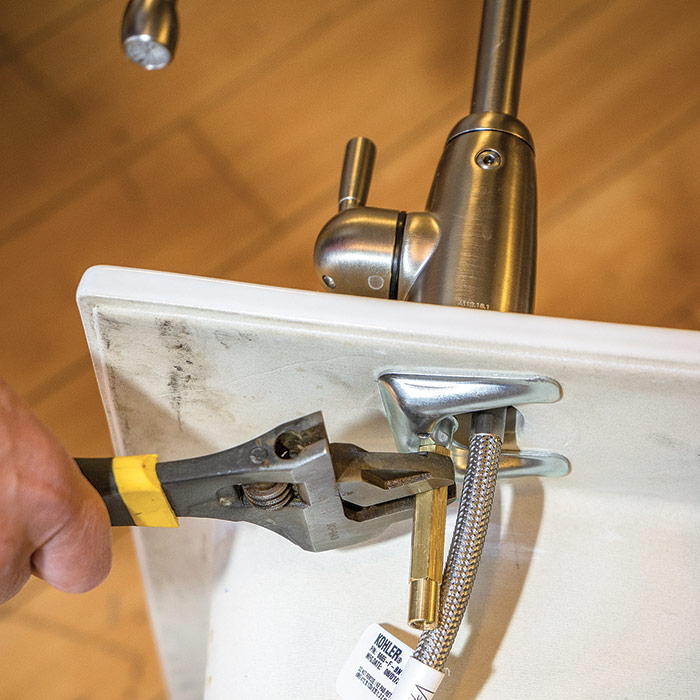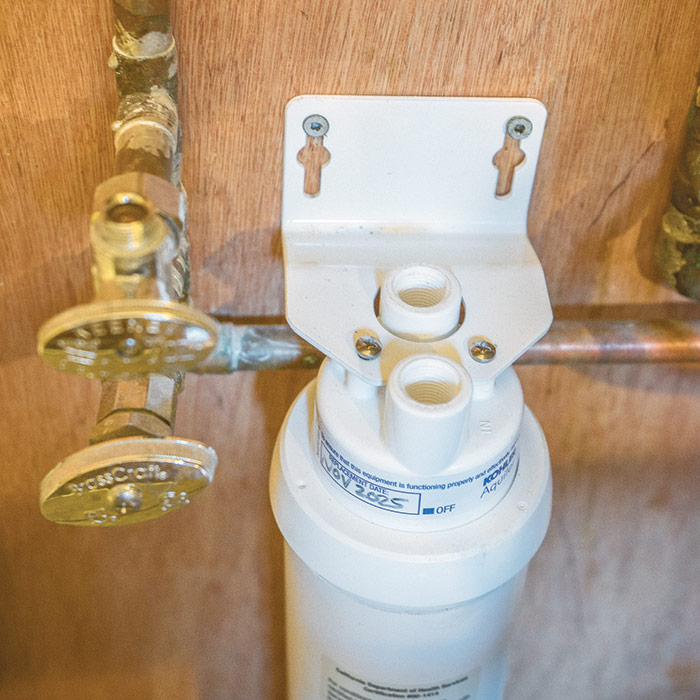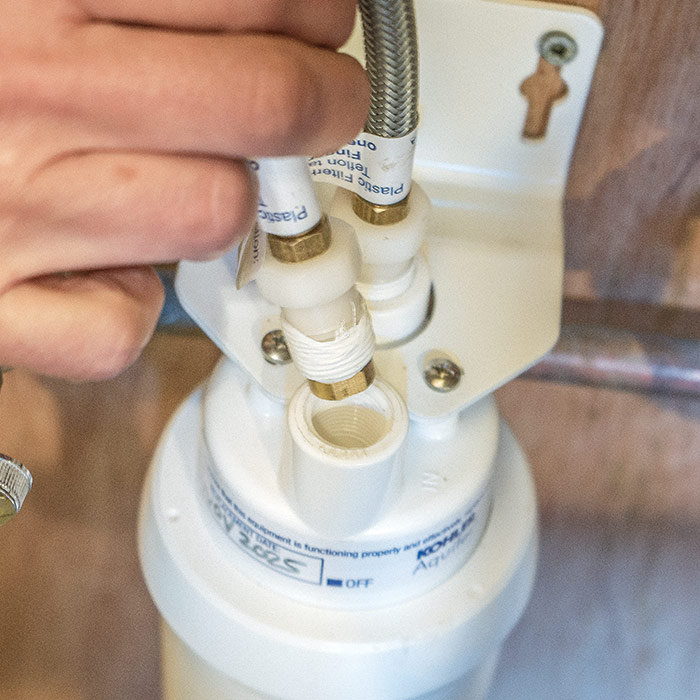An under-sink water filter can be attached to the cold-water supply of the main faucet, but in that case, it would filter all the cold water you use for cleaning as well as drinking, which would require you to change the filter more frequently. Here, we show how to install a filter with its own dedicated drinking-water faucet.
Under-Sink Water Filters
The steps shown below show installing a simple single-stage filtration and absorption system, which will filter out most particles. It has a single small filter that takes up little space and needs to be replaced only twice a year or so. Two- and three-stage filters have, unsurprisingly, two or three canisters. Some filter systems add a tank as well. Here are some common filter options:
You are watching: Installing an Under-Sink Water Filter

- Activated carbon (sometimes called charcoal) filters are inexpensive. They will remove most particles and much of the chlorine, but cannot remove heavy metals like lead and copper and won’t improve acidic water from wells. Over time, as particles collect, water pressure through the faucet will lessen as particles collect and clog.
- KDF (kinetic degradation fluxion) filters cost more, but do a better job of removing (actually, converting) chlorine and will effectively filter out heavy metals. They also kill microorganisms that are often missed by an activated carbon filter.
- An ion exchange filter is typically a canister (it may be one of the stages of a two- or three-stage filter system) containing tiny resin beads that “deionize” water, to remove nearly all inorganic particles. When used along with an activated carbon or KDF filter, pretty much all inorganic matter, parasites (including giardia), and chlorine will be removed.
- If you have serious water problems, the most common solution is a reverse-osmosis filter (see photo). These typically have two or three canisters plus a tank, and so take up a good deal of under-sink space. In addition to the filtering power of KDF filters, a reverse-osmosis filter removes radioactive contamination, which is a problem in many areas, and turns hard water into soft, drinkable water.
The faucet will require a hole in the sink’s deck. The sink shown here came with four holes, so one was available. Some porcelain or fireclay sinks (like the one shown here) have knockouts, which you tap with a hammer and cold chisel to produce a hole. If none of these options are available, you may need to drill a new hole in the sink or countertop.
Read more : Why Is My Moen Faucet Blinking?
The water path is easy to follow: It runs from the cold-water pipe to the filter, and then to the faucet.




Excerpted from Plumbing (The Taunton Press, 2016) by Steve Cory.
Source: https://gardencourte.com
Categories: Kitchens


